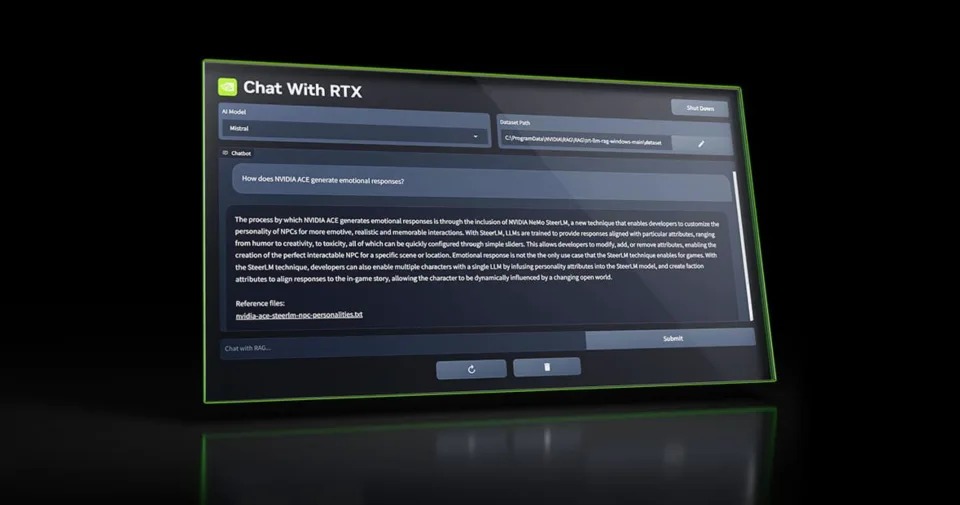Artificial intelligence made historic leaps recently – but predominantly through cloud-based models like ChatGPT housed remotely on distant servers to enable responsiveness and computational scale.
Now Nvidia proposes an alternative approach deploying robust generative AI abilities exclusively on local devices. Dubbed Chat with RTX, this fledgling chatbot aims delivering tailored performance directly leveraging user data housed on their own PC.
This analysis explores the possibilities and limitations around Chat with RTX’s localized design to assess suitability assisting journalists, academics, creatives and beyond through personalized breakthroughs.
How Chat with RTX Operates Diffferently
Most assisted AI relies on vast data centers rapidly processing neural networks. Chat with RTX explores a divergent model.
On-Device Processing Minimizes Latency
Rather than offloading computation externally, all speech and language translations get handled real-time on local GPU hardware courtesy Nvidia RTX chips or equivalent graphics cards.
This circumvents round-trip delays inherent reaching cloud servers enabling quicker response times for certain basic queries.
Local File Access Powers Personalization
More critically, residing on user devices permits Chat with RTX directly accessing files like documents, emails and media to allow custom insights or creative applications.
By ingesting original user content kept locally across categories spanning text, code, images and video, tailored utility emerges simplifying workflows.

Early Potential Applications and Use Cases
While still rather primitive leveraging demo-grade models during early testing, Chat with RTX shows promise across areas including:
Personalized Summarization
Analyze years of existing writings or publications generating custom abridged overviews per user interests and priorities using personalized vocabularies.
Creative Content Generation
Automate early-phase creative needs like slogans, templates or music tracks trained exclusively on previous works establishing styles and patterns.
Data Analysis and Reporting
Process surveys, scientific measurements or transactional records surfacing original insights uncovering new trends and findings via contextual understanding.
Assist crafting data-driven narratives and identifiable patterns inside complex enterprise information at speed and scale.
Addressing Potential Pitfalls and Challenges
Despite intriguing capabilities in controlled environments,Chat with RTX faces meaningful barriers to seamless mainstream adoption currently:
Limited Knowledge Depth
While fine-tuned towards individual data, Chat with RTX lacks comprehensive world knowledge that large centralized models accrue training at scale to answer extensively.
Conversations grow stilted without analogical connections or conceptual bridges augmented datasets power.
Insufficient Security Precautions
Additionally, early Chat with RTX risks mishandling or exposure of private user information referenced locally absent stringent safeguards governing data usage, storage and transmission policies.
As locally-powered AI assistants mature, governance and compliance grows in lockstep mitigating potential harms through accountability.
The Outlook for Locally-Processed AI Assistants
For now Nvidia demos a compelling vision of amplified intelligence converging user contexts with lightning-fast device interactions via Chat with RTX experiments.
But enterprises must balance functionality gains against trust, security and ethical development as assisted experiences migrate handling sensitive documents or duties.
If perfection proves elusive presently, Nvidia’s ambient computing foundations carry promise supplemented improving privacy protections and intelligence depth over successive product generations.










Add Comment